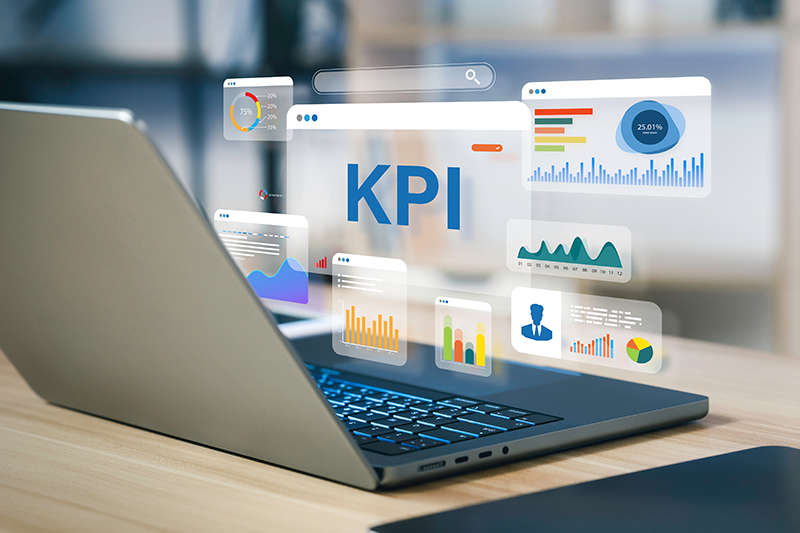
KPIs That Actually Drive Results: An Executive’s Guide to Metrics That Matter
Introduction: Why Metrics Alone Aren’t Enough
Executives are inundated with numbers: dashboards, reports, spreadsheets. The challenge isn’t data—it’s deciding which metrics truly inform decisions. Vanity metrics, while easy to collect, rarely drive meaningful change.
This article provides a framework for executives to focus on key performance indicators (KPIs) that directly influence strategy, growth, and operational excellence. You’ll learn how to identify, track, and act on the metrics that matter most.
1. What Makes a KPI Valuable?
A KPI isn’t just a number—it’s a signal of organizational performance. High-value KPIs have three characteristics:
- Aligned: Reflect the organization’s strategic goals.
- Actionable: Provide insight that can inform decisions or corrective actions.
- Reliable: Based on accurate, timely, and consistent data.
“If a metric doesn’t influence a decision, it isn’t a KPI. It’s noise.”
Executives should view KPIs as early warning signals and performance levers, not just reporting artifacts.
2. Categories of Executive KPIs
While KPIs vary by industry, these broad categories often matter to C-level leaders:
| Category | Typical Metrics | Executive Insight |
|---|---|---|
| Financial | Revenue, Gross Margin, Profit, Cash Flow | Measures overall health and resource allocation |
| Customer | Retention Rate, Net Promoter Score, Customer Lifetime Value | Informs marketing, sales, and loyalty strategies |
| Operational | Cycle Time, Inventory Turnover, Service Level | Reveals efficiency and process bottlenecks |
| Employee / Talent | Turnover Rate, Productivity, Engagement | Indicates organizational capacity and risk |
| Strategic Initiatives | New Product Launch Success, Market Share Growth | Tracks progress on high-priority initiatives |
3. How to Choose the Right KPIs
Executives should consider:
- Strategic Relevance: Does this KPI reflect a key objective?
- Frequency & Lag: Can it be measured in near real-time or only after a delay?
- Data Quality: Is the underlying data accurate, complete, and trustworthy?
- Actionability: Will the KPI prompt a decision or initiative?
Challenge: “Ask your team: if this number changes, what action would you take tomorrow?”
A small set of meaningful KPIs is better than dozens of metrics that confuse or mislead.
4. From Data to Insights: Executive Dashboards
Executives need KPIs surfaced quickly, clearly, and contextually:
- Visualizations: Graphs, trend lines, and color-coded indicators make patterns obvious.
- Comparisons & Benchmarks: Show current vs. target performance and historical trends.
- Annotations: Explain spikes, dips, or anomalies to prevent misinterpretation.
Tip: “Dashboards should answer the question: what’s happening, why it matters, and what action is required?”
With tools like nollejBase dashboards or DAZL pipelines, teams can automatically calculate, segment, and visualize KPIs without burdening executives with raw data manipulation.
5. Avoiding KPI Pitfalls
Executives should watch for common mistakes:
- Vanity Metrics: Metrics that look good but don’t influence outcomes (e.g., website hits without conversions).
- Too Many Metrics: Overwhelming dashboards dilute focus and slow decision-making.
- Ignoring Context: Numbers without comparison points or trends can mislead.
- Stale Data: Old or delayed metrics reduce responsiveness.
6. Integrating KPIs into Decision-Making
Effective executives embed KPI monitoring into routine decision cycles:
- Review KPIs Weekly or Monthly: Focus on trends, deviations, and actionable alerts.
- Discuss in Strategy Meetings: Align metrics with initiatives and resource allocation.
- Iterate Based on Results: Refine KPIs as business objectives evolve.
- Close the Loop: Ensure that insights drive actions and those actions influence outcomes.
Insight: “KPIs are not a report card. They are a compass for action.”
7. Executive Takeaways
- Select a small number of strategic, actionable KPIs aligned with company goals.
- Ensure data quality, timeliness, and context to enable confident decisions.
- Leverage dashboards and automated pipelines for real-time visibility.
- Regularly review, refine, and act on KPIs to maintain organizational agility.
The Flow: Data -> KPI Calculation -> Dashboard -> Decision -> Action -> Monitor -> Iterate
Conclusion
KPIs empower executives to turn data into decisions. The value lies not in reporting everything, but in surfacing the right numbers, at the right time, in a way that informs immediate and strategic action.